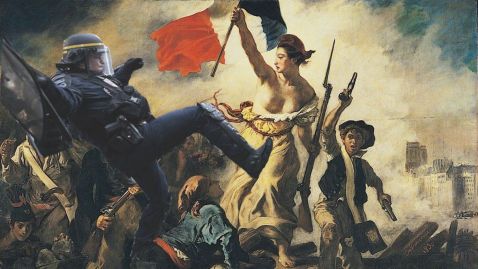
‘And the police?’ asked Antoine. ‘Who’s in charge? We’re deep in gendarme territory here.’
To someone not French, that might seem a little opaque. Gendarme territory? What’s that? Well, actually, it’s simple: in France, you have ‘la police’, who are policemen, and ‘la gendarmerie’, who are sort of policemen too, but technically speaking are soldiers. They don’t go off and fight in far-flung trouble spots, but they belong to the army, not the police, and they have army ranks like brigadier, major, lieutenant-colonel and so on. Logically, then, they’re run by two different ministries: the gendarmes by the Ministry of Defence, the police by the Ministry of the Interior. And just to make sure everyone knows who they’re dealing with, they have different territories. The gendarmes are in the country, but commit an offence in a town with more than 20,000 inhabitants and you’ll have the police on your heels.
It’s a strange system, but it seems to work quite well, at least when you go to the cinema. I love it in the American flicks – sorry, movies – when Tommy Lee Jones says, ‘Move over, asshole. The FBI is running this show from now on.’ You don’t get that in France. Eh, toi, gendarme, casse-toi! C’est pour la police maintenant! Nope, doesn’t happen, at least not in films (though that may be because French films are either slapstick comedies or profound discussions about love, food and existentialism).
On the whole, the French themselves don’t make a big distinction. Both a gendarme and a policeman are flics – a slang term with several possible explanations. The one I favour is an abbreviation of fligarde, the name of the truncheon carried by the first militia men.
These days, of course, truncheons are not enough. Arriving in France, it took me a while to get used to the guns, especially as there were routine stories of the flics not hesitating to use them. Though still largely unarmed, the British police have upped the machismo considerably, but when I left, they were bobbies on the beat, sauntering down the street saying, ‘Evenin’ all’ and touching the rim of their helmet.
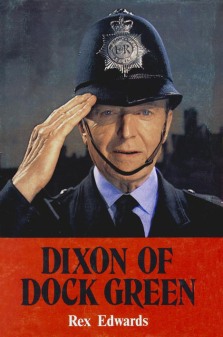
‘It’s funny, Vincent Darlier said that too. Seeing the way I cared actually stopped him resigning.’ Magali laughed. ‘Can you imagine that? But then he’s got a bit of a crush on me.’
‘Really? A gendarme?’
‘They’re human beings, you know. Just with silly hats.’
Yes, flics are real people. I still have a bit of trouble with that. As researcher Camillo de Camargo says, ‘When they put on their uniform it seems that they adopt the authority that goes with it, contributing to what is known as the ‘police personality’.’ She’s talking there about the US, but the same applies in France. I’m sure when they go back home, they’re normal Frenchmen who discuss love, food and existentialism – OK, maybe just love and food – but when out on the street, they don the mean persona with great conviction.
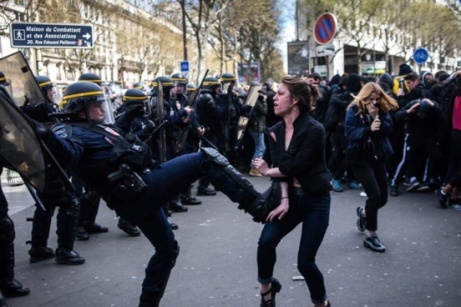
Far be it from me to suggest they deserve it, but given their readiness with the boot (OK, only some of them, I know), it’s somewhat ironic to see them demonstrate, as they did the other day, against ‘anti-flic hatred.’
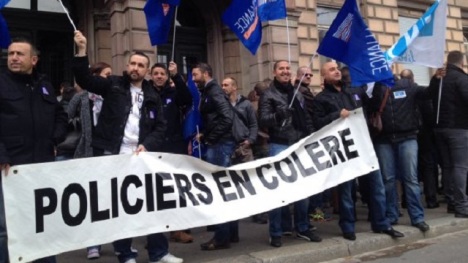
The gendarmes in One Green Bottle are more obtuse than nasty, but they still don’t exactly shine. If they did, there wouldn’t be much for Magali to do. It’s a private investigator novel, not a police procedural – the P.I. works outside or against the police force. But maybe I’m doing the flics an injustice – I should have made Magali a gendarmette.
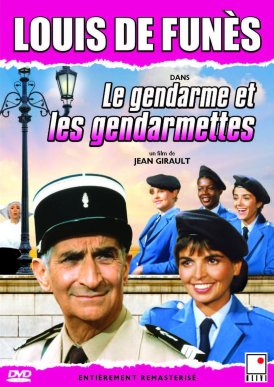
This post is part of Phoebe’s forum for fascinating French phenomena, All About France.
This series of keys to One Green Bottle provides background information about the process of writing it.
Key n° 1: The setting: Sentabour
Key n° 2: The main character: Magali
Key n° 3: Grief personified: Charlotte
Key n° 4: The painter of Provence: Cézanne
Key n° 5: The killer’s criteria: locations
Key n° 6: Aston Martins and Broomsticks: the detective plaque

I loved your comments about French police and French films. Sadly, you are somewhat out of date about UK police. Although officially ‘unarmed’ they are frequently armed to the teeth, especially in London and at airports (sign of the times).
Yes, some are certainly armed and the number is rising. And when they are armed, it’s not in half measures, as you say. Of course they’re highly visible in airports and so on, which is why we might get the impression they’re in a majority. But the BBC has it at 5% – that was in 2012. Even if numbers are rising, it’s still a small proportion.
I like Magali as a PI. So much freedom and independence. So much intelligence.
Obviously, that big, threatening, heavily armed man in the photo deserved a boot. Oh. Wait a minute…
Apparently the woman was just coming out of a restaurant. Which of course was very silly of her. Shouldn’t have been there in the first place.
smh
LOL! Flics or for that matter cops and existentialism just don’t mix! Love Louis de Funès, that’s a great film!
Mmm, the existential police thriller – maybe a new genre? Thanks for dropping by!
I’m loving “Phoebe’s forum for fascinating French phenomena” haha!! I’ve never really understood the difference between gendarmes and police (other than military or not) so I was interested to read your description of country and over 20,000 population. So how does my town fit in which is a country town, though not really as it sits just on the edge of the big conurbation that is Nice, Cagnes s/mer, Villeneuve-Loubet and has a population of about 7,000 and we have both types of flics. Are we that wicked that we need police and gendarmes? Thanks for linking to my “forum” #allAboutFrance
Ah, good question, Phoebe! I have no idea how it works out on the ground in specific cases. On the whole, I think the cooperation is pretty good but there are bound to be complications sometimes. Something to investigate further!
Comments are closed.